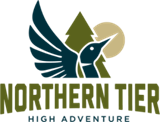
Camping Guidelines
The Scouting America “Camping” program is a series of outdoor activities that help Scouts develop confidence, self-reliance, and leadership skills. Camping also helps Scouts learn about citizenship, character development, and physical and mental fitness.
Camping programs for Scouts
Troop camping
A guided weekend camping experience that helps new troops learn proper equipment and camping methods
Resident camp
A long-term camping experience that includes at least five nights and six days of outdoor activities
Join us at Boxwell Summer Camp or Winter Camp https://www.mtcscouting.org/scoutsbsacamp
Camporee
A short-term camp coordinated by the council that Arrow of Light Scouts can participate in is usually hosted by a District. We also put on Council Jamborees that happen every 2 to 4 years.
Camping programs for Cub Scouts
Pack overnight
A short-term overnight campout that helps Cub Scouts get to know each other and work on outdoor adventures
Day camp
A three- or five-day event that helps Cub Scouts make new friends and learn outdoor skills, Join us for our Day Camps or “Adventure Camps” https://www.mtcscouting.org/adventurecamp
Resident camp
A long-term overnight camping experience for Cub Scouts and their parents or guardian or Pack leadership.
We offer a wonderful program at Cubworld the Camp made for Cub Scouts, called Family Scouting at Cubworld. You can find more information at https://www.mtcscouting.org/familyscouting
Webelos and AOL have an additional opportunity to join us for fun at our Webelo Winter Weekend at Cubworld. https://www.mtcscouting.org/webeloswintercamp
The purpose of the Camping Committee is to promote safe and fun Camping programs to the youth and leaders in the Middle Tennessee Council. This will be accomplished by appropriate guidance and support from the trained volunteers of the committee. Give support to the Middle Tennessee Council camping events while working with the Order of the Arrow and promote camping in the district.
The Camping Committee is led by William Hickman and Staff Advisor Jason Flannery If you would like more information about the camping committee, please email Jason Flannery at jflannery@mtcbsa.org

The Committee meets on
DISTRICT NAME | CHAIRMAN | |
Centennial | Sandra Green | |
Cogioba | Stephanie William | |
Percy Priest | Alex Covert | |
Highland Rim | Jeff Ussery | |
James E. West | Keith Johnson | |
Natchez Trace | Loren Watson | |
Caney Fork | Wendy Dewberry | |
Bledsoe Creek | Jonathan Wade | |
Frontier | Dr. Greg Hines | |
Elk River | Doug Gervais | |
Cumberland River | ||
Trail Of Tears | Brian Webber |
If you need help or information on your District Camping program, please contact your District Chair.
For information on our Camping Programs in The
MIDDLE TENNESSEE COUNCIL
https://www.mtcscouting.org/camping
Camping
Organized camping is a creative, educational experience in cooperative groups living outdoors. It uses natural surroundings to contribute significantly to physical, mental, spiritual, and social growth.
Camping contributes to good health.
Camping helps campers develop self-reliance and resourcefulness.
Camping enhances spiritual growth.
Camping contributes to social development.
Camping is an experience in citizenship training.
The Cub Scout Outdoor Program
Cub Scouting offers overnight camping opportunities for Cub Scouts through long-term camps, Webelos den overnight campouts, council-organized short-term or family camps, and pack overnighters. For more information on Cub Scout camping guidelines click here.
Pack Overnight Site Appraisal Form This site appraisal form is to be used by the local Scouting America council to evaluate pack overnight family camping locations. It should be kept on file in the council office for local unit reference and is periodically reviewed for accuracy.
Cub Scout Day Camp
Cub Scout Day Camp introduces Cub Scouts to camping and helps them develop outdoor skills at an appropriate age level that will later be applied more thoroughly as a Scout.
For information and resources on Cub Scout Day Camp Click HERE.
The Scouts BSA Outdoor Program
Outdoor adventure is the promise made to boys and girls when they join Scouting. Young people yearn for outdoor programs that stir their imagination and interest. Learn More about the Scouts BSA Outdoor Program.
For additional resources for Scouts BSA Program consider – The Adventure Plan (TAP) now available on tap.scouting.org which provides Unit leaders a digital tool kit of all resources useful in planning and conducting outdoor adventures.
Scouting America offers four unique high-adventure bases across the United States offer Scouts the outdoor adventure of a lifetime, which is core to Scouting’s mission. National High Adventure Treks offered at each our four high-adventure bases are a multitude of specialized seasonal programs, from backpacking treks, to winter expeditions, to ocean adventures, these Treks will be sure to bring exploration to new heights. Brands like yours can be at the forefront of these adventures through sponsored gear, backpackable snacks, STEM preparation programs, and more!
In addition to Scouting summer camps and backcountry treks, our high-adventure bases host a wide variety of non-Scouting events and programs and are always looking for brand partners for highly attended events with captivated audiences! If’d like to learn more about these opportunities…
For more information go to https://www.scouting.org/national-high-adventure-bases/
Scout Outdoor Awards
There are several awards related to the Outdoor Programs of Scouting America that can supplement your Scout BSA experience. Click here to learn about these awards and recognition.
Historic Trails
Short-Term Camp
A short-term camp is any council-organized overnight camping program, whether one-time or continuing, that is one, two or three nights in length where the council or its agents provide the staffing and may provide program and food services, and includes camps conducted off council properties. National training courses are subject to the short-term camp requirements, regardless of format or duration.
For information and resources on short-term camp, click here.
Camporee Guide – Note: a new version of the document “Short-Term Camp Guidebook” is being developed.
Long-Term Camp
A long-term camp is a council-organized camp of four nights or more that operates under council-retained leadership. National Camp Accreditation Program
Outdoor Programs Committee Guide
The Outdoor Programs Committee Guide, No. 430-935, is designed to help councils and districts offer a balanced outdoor program that delivers the promise of Scouting—from Cub Scouting to Venturing and Sea Scouting. The publication emphasizes integration of partner committees (Conservation, COPE/Climbing, Aquatics, Fishing, Shooting, Properties, Maintenance, Risk Management, and Health and Safety) to achieve the program goals of the council. The appendix includes a self-assessment tool to help councils identify areas for improvement.
Outdoor Ethics Guide

The purpose of this handbook is to guide units in developing a culture that effectively demonstrates responsible outdoor choices that reduce the impact of Scouting activities. The handbook identifies the responsibilities of the outdoor ethics guide, provides ideas on how to carry out this role, and lists resources. It also provides methods for leaders to support Scouts selected for this position and a way to evaluate success.
The outdoor ethics guide is a troop position of responsibility that counts for the leadership requirement for Star, Life, and Eagle ranks. It was instituted in the 13th edition of the Scouts BSA Handbook. This replaces the role of the Leave No Trace trainer, which was also a Star and Life leadership position. Venturing crews may elect to assign the responsibility of outdoor ethics guide to a member, but it is not a leadership position.
Specific information about Leave No Trace and Tread Lightly! are not addressed in this handbook. Information about specific skills and how to demonstrate them can be found in the Scouts BSA Handbook and the fifth edition of the Scouting America Fieldbook. Information on these are also found at the Leave No Trace and Tread Lightly! websites.
You can download the Outdoor Ethics Guide Handbook, here.
Outdoor Ethics Guide Contents
THE PRACTICE: MAKING RESPONSIBLE OUTDOOR DECISIONS
HOW TO BE MOST SUCCESSFUL IN THE ROLE
RESPONSIBILITIES OF THE OUTDOOR ETHICS GUIDE
HELP YOUR UNIT PLAN AND CONDUCT AN EFFECTIVE OUTDOOR ETHICS PROGRAM
ENCOURAGE SCOUTS TO COMPLETE OUTDOOR ETHICS AWARDS AND MERIT BADGES
OUTDOOR ETHICS GUIDE ADVISOR HANDBOOK
Outdoor Ethics/Leave No Trace
From a Cub Scout’s first hike in a local park to the thrill of our High Adventure bases, from our backyard to the backcountry, our outdoor ethics guide us to be responsible outdoor citizens — protecting our natural world for generations to come and being considerate of other visitors. Scouting has a long, proud tradition of conservation service to the nation. How do we maintain our outdoor ethics and preserve that tradition? By heeding the challenge in the Outdoor Code:
As an American, I will do my best to—
Be clean in my outdoor manners.
Be careful with fire.
Be considerate in the outdoors.
Be conservation-minded.
Building upon this foundation, the Cub Scout, Scouts BSA, Venturing, and Sea Scout programs all include outdoor stewardship, care for the environment, and Leave No Trace as part of their programs. At the Scouts BSA level, youth are encouraged to take leadership positions in encouraging proper outdoor ethics using the principles of Leave No Trace. Many Venturing crews have similarly adapted Leave No Trace principles to guide their outdoor recreation activities. Through the Outdoor Code and Leave No Trace, we can take responsibility for our own impacts. We can provide leadership to those around us to reduce their impacts by making good choices. Together, we can preserve and conserve our rich environmental heritage.
Learn more about the Outdoor Code.
Learn more about Leave No Trace.
Scouts and Venturers who embrace the Outdoor Code and the principles of Leave No Trace often find that they wish to give back and help protect the environment that has given them so much. Some may find that they are “wild with love for the green outdoors—the trees, the tree-top singers, the wood-herbs, and the nightly things that left their tracks in the mud,” in the words of Ernest Thompson Seton, the first Chief Scout. These Scouts and Venturers have begun to feel what Aldo Leopold called the “Land Ethic.” The Land Ethic extends our concern beyond our fellow Scouts and Venturers, our families and friends, and even humanity itself to the entire environmental community of which we are a part—the deserts, forests, fish, wildlife, plants, rocks, oceans, and web of life encompassing them—what Leopold called “the Land.”
Learn more about the Land Ethic.
Scouting America has partnered with Tread Lightly! to provide specific practical outdoor ethics guidance for motorized activities.
Learn more about Tread Lightly!.
Promoting Outdoor Ethics in the Scouting America Outdoor Program
Scouting has incorporated outdoor ethics at all program levels. To learn even more about outdoor ethics, many Scouts, Venturers and adults earn the Scouting America Outdoor Ethics Awareness and Action Awards.
The troop Outdoor Ethics Guide is a youth who supports learning the skills, practices and ethics needed for responsible outdoor recreation. The guide is coached by an adult advisor.
Learn more about the Outdoor Ethics Guide & Advisor
Both youth and adult members, especially those who are teaching outdoor skills to others, are encouraged to take specialized courses to learn Leave No Trace skills.
Learn more about Outdoor Ethics Training in Scouting America
Many councils have an Outdoor Ethics Advocate and Leave No Trace Level 1 & 2 Instructors who provide leadership to their local units, districts and council in learning and practicing good outdoor ethics. Council Outdoor Ethics Advocates and Conservation Chairs are supported by Outdoor Ethics & Conservation Coordinators and Outdoor Ethics & Conservation Managers.
Find your council’s key Outdoor Ethics Contacts
The Scouting America Outdoor Ethics and Conservation Subcommittee organizes monthly roundtables, hosts a national conference, and provides resources for everyone teaching and promoting outdoor ethics in Scouting:
Do you have questions about Scouting’s outdoor ethics? Email us at outdoorethics@scouting.org
Leave No Trace
The Leave No Trace principles might seem unimportant until you consider the combined effects of millions of outdoor visitors. One poorly located campsite or campfire may have little significance, but thousands of such instances seriously degrade the outdoor experience for all. Leaving no trace is everyone’s responsibility.
Leave No Trace Awareness
Instilling values in young people and preparing them to make moral and ethical choices throughout their lifetime is the mission of Scouting America. Leave No Trace helps reinforce that mission, and reminds us to respect the rights of other users of the outdoors as well as future generations. Appreciation for our natural environment and a knowledge of the interrelationships of nature bolster our respect and reverence toward the environment and nature.
Leave No Trace is an awareness and an attitude rather than a set of rules. It applies in your backyard or local park as much as in the backcountry. We should all practice Leave No Trace in our thinking and actions–wherever we go.
We learn Leave No Trace by sharing the principles and then discovering how they can be applied. Leave No Trace instills an awareness that spurs questions like “What can we do to reduce our impact on the environment and on the experiences of other visitors?” Use your resources, judgment and experience to tailor camping and hiking practices to the environment where the outing will occur. Forest, mountain, seashore, plains, freshwater, and wetland environments all require different minimum impact practices.
Outdoor Ethics
Help protect the backcountry by remembering that while you are there, you are a visitor. When you visit a friend, you take care to leave your friend’s home just as you found it. You would never think of trampling garden flowers, chopping down trees in the yard, putting soap in the drinking water, or marking your name on the living room wall. When you visit the backcountry, the same courtesies apply. Leave everything just as you found it.
Hiking and camping without a trace are signs of an expert outdoorsman, and of a Scout or Scouter who cares for the environment. Travel lightly on the land.
Leave No Trace Training
Scouting America has embraced the Leave No Trace program as a core of our Outdoor Ethics. Scouting has incorporated Leave No Trace at all levels of our program. The next step in learning more about Leave No Trace for many Scouts BSA and older members is earning the Scouting America Outdoor Ethics Awareness and Action Awards.
For those who want to learn even more and teach others, there are three Scouting America training courses that focus on Leave No Trace. For more information, see Scouting America Outdoor Ethics Training.
The Leave No Trace Seven Principles
1. Plan Ahead and Prepare
Proper trip planning and preparation helps hikers and campers accomplish trip goals safely and enjoyably while minimizing damage to natural and cultural resources. Campers who plan ahead can avoid unexpected situations, and minimize their impact by complying with area regulations such as observing limitations on group size. Schedule your trek to avoid times of high use. Obtain permits or permission to use the area for your trek.
Proper planning ensures
Low-risk adventures because campers obtained information concerning geography and weather and prepared accordingly
Properly located campsites because campers allotted enough time to reach their destination
Appropriate campfires and minimal trash because of careful meal planning and food repackaging and proper equipment
Comfortable and fun camping and hiking experiences because the outing matches the skill level of the participants
2. Travel and Camp on Durable Surfaces
Damage to land occurs when visitors trample vegetation or communities of organisms beyond recovery. The resulting barren areas develop into undesirable trails, campsites, and soil erosion.
Concentrate Activity, or Spread Out?
In high-use areas, campers should concentrate their activities where vegetation is already absent. Minimize resource damage by using existing trails and selecting designated or existing campsites. Keep campsites small by arranging tents in close proximity.
In more remote, less-traveled areas, campers should generally spread out. When hiking, take different paths to avoid creating new trails that cause erosion. When camping, disperse tents and cooking activities–and move camp daily to avoid creating permanent-looking campsites. Avoid places where impacts are just beginning to show. Always choose the most durable surfaces available: rock, gravel, sand, compacted soil, dry grasses, or snow.
These guidelines apply to most alpine settings and may be different for other areas, such as deserts. Learn the Leave No Trace techniques for your crew’s specific activity or destination. Check with land managers to be sure of the proper technique.
3. Dispose of Waste Properly
This principle reminds back-country visitors to take their trash home with them. It makes sense to carry out of the backcountry the extra materials taken there by your group or others. Inspect your campsite for trash or spilled foods. Accept the challenge of packing out all trash, leftover food, and litter.
Sanitation
Backcountry users create body waste and wastewater that require proper disposal.
Wastewater. Help prevent contamination of natural water sources: After straining food particles, properly dispose of dishwater by dispersing at least 200 feet (about 80 to 100 strides for a youth) from springs, streams, and lakes. Use biodegradable soap 200 feet or more from any water source.
Human Waste. Proper human waste disposal helps prevent the spread of disease and exposure to others. Catholes 6 to 8 inches deep in humus and 200 feet from water, trails, and campsites are often the easiest and most practical way to dispose of feces.
4. Leave What You Find
Allow others a sense of discovery, and preserve the past. Leave rocks, plants, animals, archaeological artifacts, and other objects as you find them. Examine but do not touch cultural or historical structures and artifacts. It may be illegal to remove artifacts.
Minimize Site Alterations
Do not dig tent trenches or build lean-tos, tables, or chairs. Never hammer nails into trees, hack at trees with hatchets or saws, or damage bark and roots by tying horses to trees for extended periods. Replace surface rocks or twigs that you cleared from the campsite. On high-impact sites, clean the area and dismantle inappropriate user-built facilities such as multiple fire rings and log seats or tables.
Good campsites are found, not made. Avoid altering a site, digging trenches, or building structures.
5. Minimize Campfire Impacts
Some people would not think of camping without a campfire. Yet the naturalness of many areas has been degraded by overuse of fires and increasing demand for firewood.
Lightweight camp stoves make low-impact camping possible by encouraging a shift away from fires. Stoves are fast, eliminate the need for firewood, and make cleanup after meals easier. After dinner, enjoy a candle lantern instead of a fire.
If you build a fire, the most important consideration is the potential for resource damage. Whenever possible, use an existing campfire ring in a well-placed campsite. Choose not to have a fire in areas where wood is scarce–at higher elevations, in heavily used areas with a limited wood supply, or in desert settings.
True Leave No Trace fires are small. Use dead and downed wood that can be broken easily by hand. When possible, burn all wood to ash and remove all unburned trash and food from the fire ring. If a site has two or more fire rings, you may dismantle all but one and scatter the materials in the surrounding area. Be certain all wood and campfire debris is dead out.
6. Respect Wildlife
Quick movements and loud noises are stressful to animals. Considerate campers practice these safety methods:
Observe wildlife from afar to avoid disturbing them.
Give animals a wide berth, especially during breeding, nesting, and birthing seasons.
Store food securely and keep garbage and food scraps away from animals so they will not acquire bad habits. Never feed wildlife. Help keep wildlife wild.
You are too close if an animal alters its normal activities.
7. Be Considerate of Other Visitors
Thoughtful campers respect other visitors and protect the quality of their experience.
Travel and camp in small groups (no more than the group size prescribed by land managers).
Let nature’s sounds prevail. Keep the noise down and leave radios, tape players, and pets at home.
Select campsites away from other groups to help preserve their solitude.
Always travel and camp quietly to avoid disturbing other visitors.
Make sure the colors of clothing and gear blend with the environment.
Respect private property and leave gates (open or closed) as found.
Be considerate of other campers and respect their privacy.
The Leave No Trace Seven Principles © Leave No Trace: www.LNT.org. Reprinted by permission.
Learn More About Leave No Trace
The member-driven Leave No Trace organization teaches people how to enjoy the outdoors responsibly. Using the power of science, education and stewardship, Leave No Trace is on a mission to ensure a sustainable future for the outdoors and the planet.
For more information about Leave No Trace, posters, plastic cards listing the Leave No Trace principles, or information on becoming a Leave No Trace partner, contact Leave No Trace at lnt.org.
For additional resources for implementing and promoting Leave No Trace in your council, visit the Outdoor Ethics Resources webpage.




